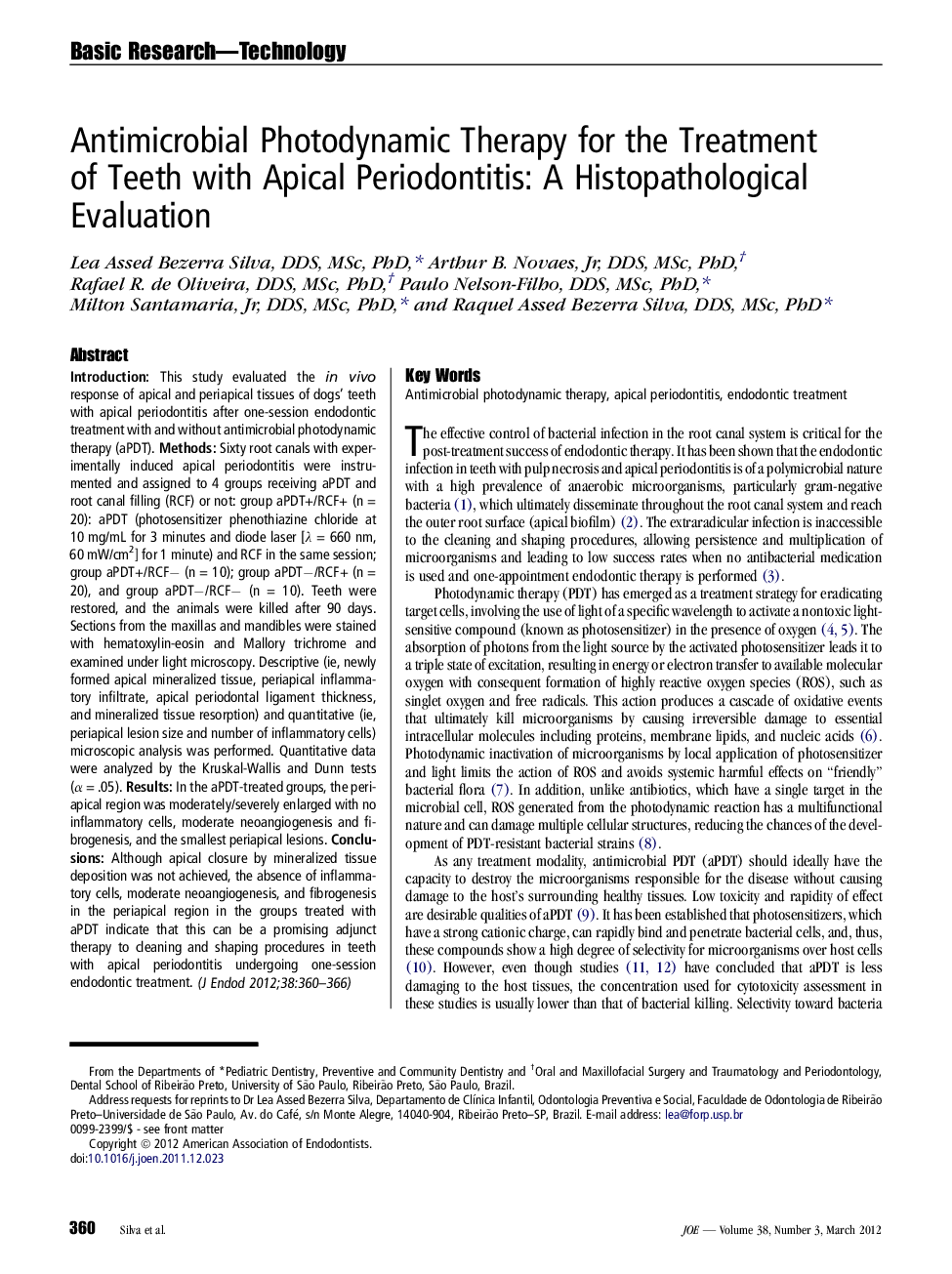| Article ID | Journal | Published Year | Pages | File Type |
|---|---|---|---|---|
| 3147065 | Journal of Endodontics | 2012 | 7 Pages |
IntroductionThis study evaluated the in vivo response of apical and periapical tissues of dogs’ teeth with apical periodontitis after one-session endodontic treatment with and without antimicrobial photodynamic therapy (aPDT).MethodsSixty root canals with experimentally induced apical periodontitis were instrumented and assigned to 4 groups receiving aPDT and root canal filling (RCF) or not: group aPDT+/RCF+ (n = 20): aPDT (photosensitizer phenothiazine chloride at 10 mg/mL for 3 minutes and diode laser [λ = 660 nm, 60 mW/cm2] for 1 minute) and RCF in the same session; group aPDT+/RCF− (n = 10); group aPDT−/RCF+ (n = 20), and group aPDT−/RCF− (n = 10). Teeth were restored, and the animals were killed after 90 days. Sections from the maxillas and mandibles were stained with hematoxylin-eosin and Mallory trichrome and examined under light microscopy. Descriptive (ie, newly formed apical mineralized tissue, periapical inflammatory infiltrate, apical periodontal ligament thickness, and mineralized tissue resorption) and quantitative (ie, periapical lesion size and number of inflammatory cells) microscopic analysis was performed. Quantitative data were analyzed by the Kruskal-Wallis and Dunn tests (α = .05).ResultsIn the aPDT-treated groups, the periapical region was moderately/severely enlarged with no inflammatory cells, moderate neoangiogenesis and fibrogenesis, and the smallest periapical lesions.ConclusionsAlthough apical closure by mineralized tissue deposition was not achieved, the absence of inflammatory cells, moderate neoangiogenesis, and fibrogenesis in the periapical region in the groups treated with aPDT indicate that this can be a promising adjunct therapy to cleaning and shaping procedures in teeth with apical periodontitis undergoing one-session endodontic treatment.
